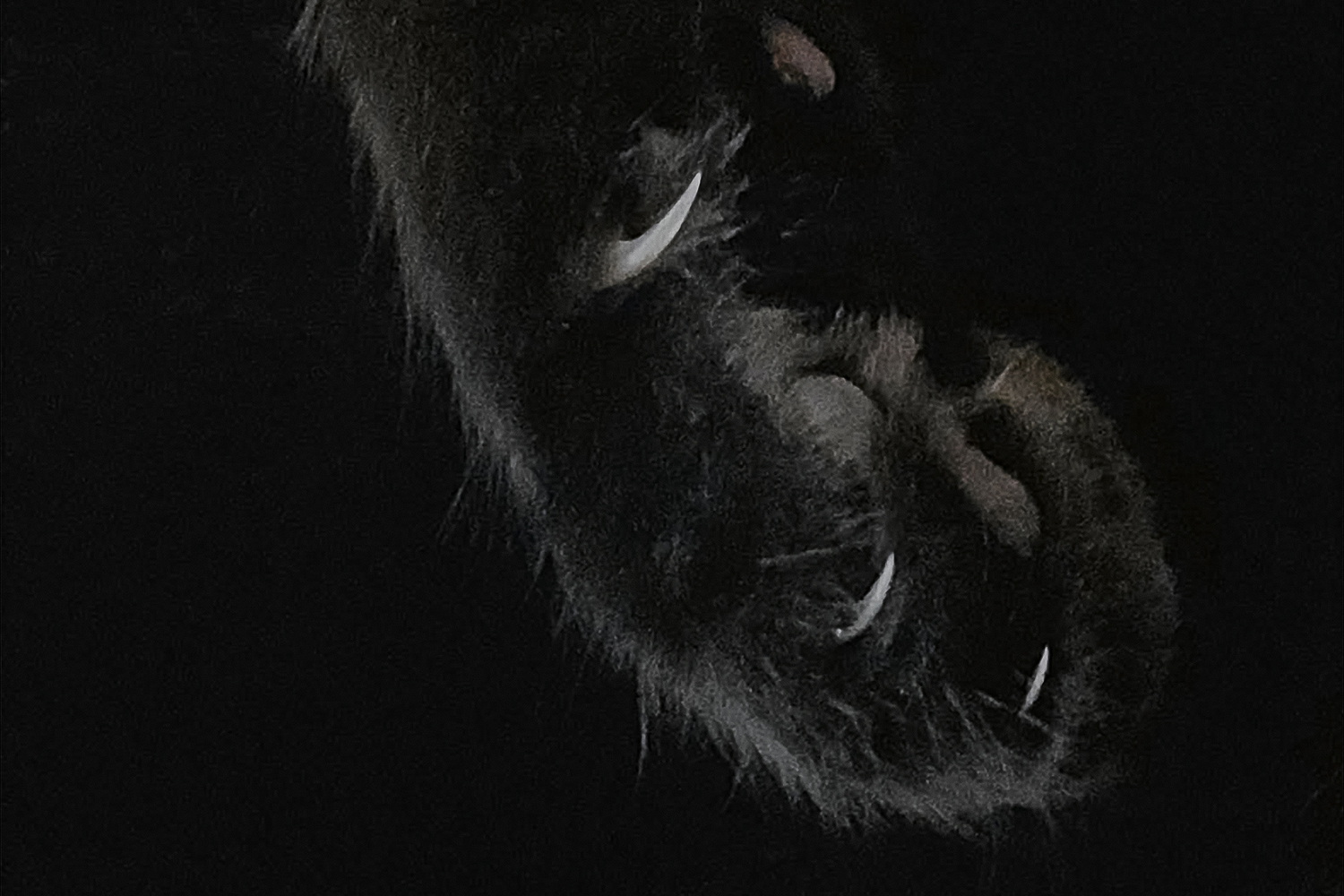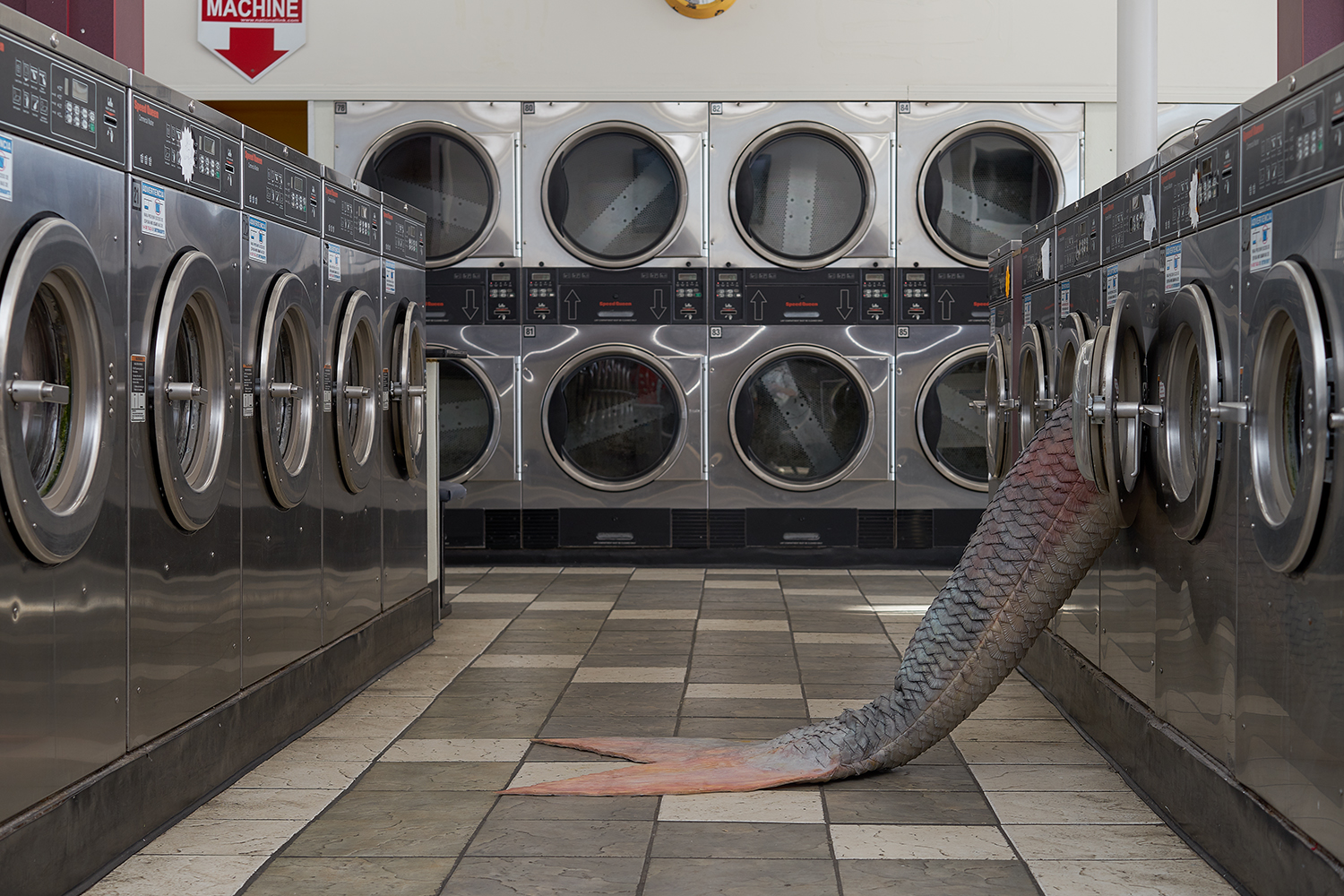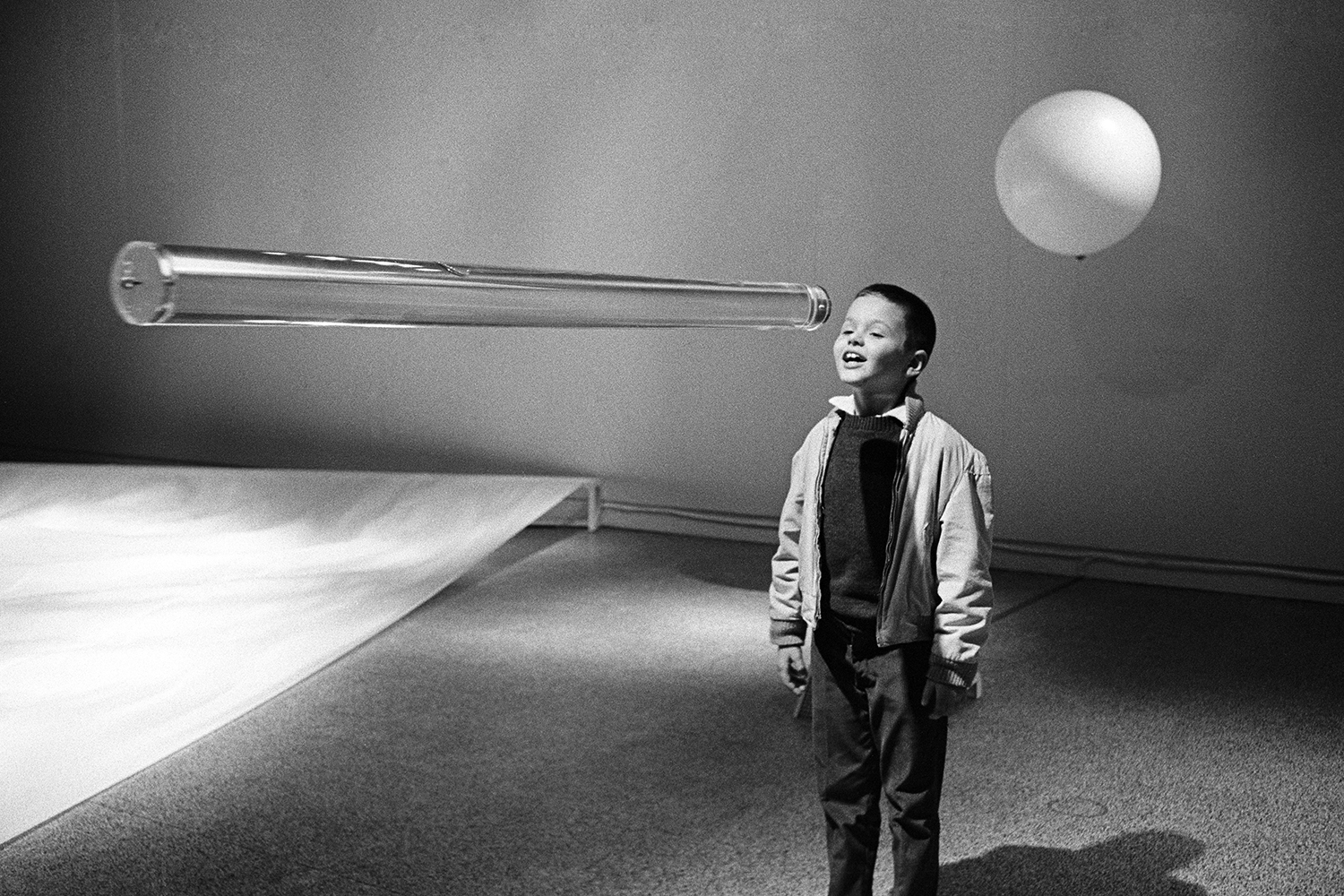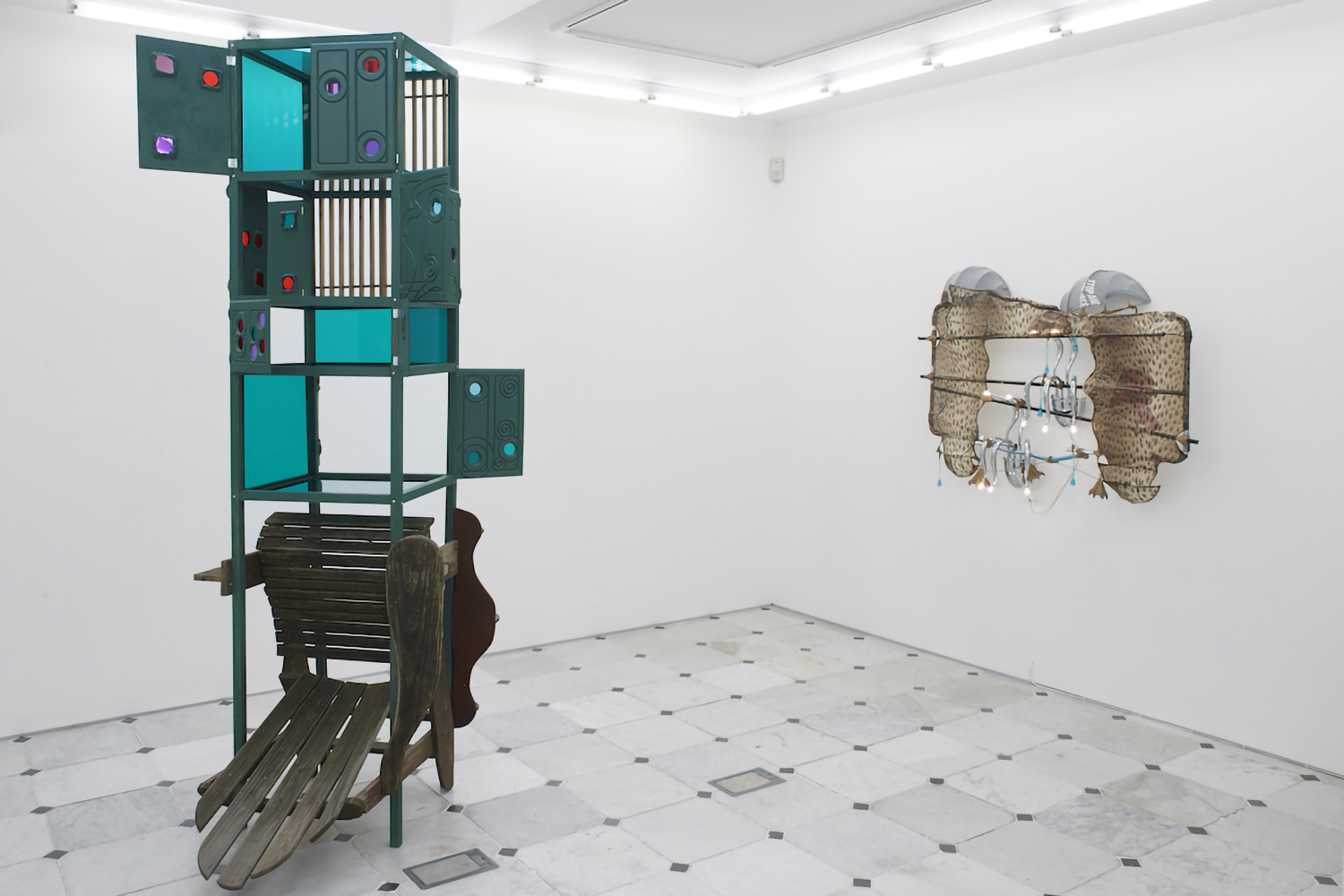
Irena Haiduk’s “REMASTER” was inaugurated by the circulation of five hundred keys, which physically open an exhibition that otherwise remains locked behind imposing steel doors. During the opening’s jovial key ceremony, the art historian Jovana Stokic played a keyboard rendition of Bryan Ferry’s “Sunset,” a nod to Haiduk’s deliberately crepuscular lighting and to her exhibition’s central reference, Mikhail Bulgakov’s The Master and Margarita (1928–40). Nicknamed his “sunset novel” due to its unfinished state after Bulgakov burned and rewrote the manuscript under the censorship and repression of Stalin’s Soviet Union, the novel and its historical context are analogous to the critical task that Haiduk sets forth: imagining and sensing beyond the shadowy limits of aesthetic production in our paranoid present.
“REMASTER” adapts Bulgakov’s novel both architecturally and cinematically. In doing so, Haiduk upends the visual expectations of an exhibition while exposing its tacitly ritualized conventions. The community of keyholders form an anonymous counter-public that determine the exhibition’s access, and are able to unlock its future iterations in Shanghai and Düsseldorf. Haiduk’s use of lustrous surfaces — a mirrored floor on the main gallery’s presentation of the novel’s Variety Theater and mirrored walls within the apartment scene upstairs — heightens the awareness of an exhibition’s artificial constructedness within existing spaces and hegemonic systems. Their abounding reflections suggest the imprisoning condition of being constituted as an image, against which the dark lighting provides refuge from hypervisibility. Several metallic sculptures evoke labyrinthine architectural models, templates for getting lost within intervals of fiction and imaginary infrastructures.
Lunar Interval VI plays once per hour within the Variety Theater, replete with a foam banquette, pristine flower arrangements, and wall-mounted candleholders. To construct her cinematic adaptation of Bulgakov into a “film without images,” Haiduk scripted and recorded audience readings at her prior exhibitions and remixed this multitude of voices into a call-and-response with a robotic female narrator. “REMASTER” will also be turned into a film studio, where new voices will be recorded and incorporated. The choreography of voices sounds at times like a threatening mass, other times like a rebellious cacophony. The conjunction of orality with the nonvisual stages a scene of re-mastering, divesting the exhibition of its structures of power by turning to the fictional, hidden, unseen, and opaque. As the film’s robotic voice avows to its covert audience: “There is nothing to reveal. But if you insist, I will reveal something.”




